Soup has been a hot topic1 across social media in recent autumns and winters. As a meme, some have traced the origins of soupposting2 to popular screencaps taken of a moment in which Seinfeld’s George claims that he is “shifting into soup mode”, which has been frequently reposted by soup lovers across social media.
We have seen the rise of the ‘soup girlie’, souptok, soup twitter, and numerous cross-platform, soup centric memes have risen to popularity over the past few years including screencaps from an episode of Seinfeld or an audio clip of Adam Driver uttering “good soup”. These memes are exceedingly simple yet widely used, reposted, and beloved by internet users. Much like a real bowl of soup, the familiarity, simplicity, and warmth to be found in soupposting has great appeal, and soup has been a recurring trend associated with coziness and comfort for several years running.
I myself am no stranger to soup posting - I first shared the ‘soup mode’ meme in college when I got my wisdom teeth removed and spent a week sipping broths and smoothies. I’ve watched more soup making videos than I can count, and reposted plentiful images of cartoon animals stirring simmering pots of stew. More recently, I spent autumn and winter last year documenting every bowl of soup I ate in a very long twitter thread(this was, I will note, before the great twitter collapse and my departure from the platform.) Even as I write this, I am drinking a creamy, coconut milk mushroom soup from a mug in my kitchen. It is december, and I have a list of the next few soup recipes I want to make stuck to the wall above the refrigerator. Soup is inescapable, inevitable. Eternal soup.
Both within and without the whimsical and weird world of internet soupposting, soup is a unifying force and an enduring symbol of coziness, nourishment, safety. I think about the associations it carries as a food item and the feelings that come to mind when thinking of a hearty, warming soup consumed in the harsh cold of winter. The word ‘restaurant’ traces its roots back to the French establishments which sold a hearty bouillon broth before eventually widening their offerings - this ‘restaurant’ was a form of soup believed to have restorative, invigorating properties. Elsewhere, soup is often eaten to combat illness and offered as a food to eat when feeling unwell. Soup can be a healing potion, a hearty meal to be shared, a true restor-ant.
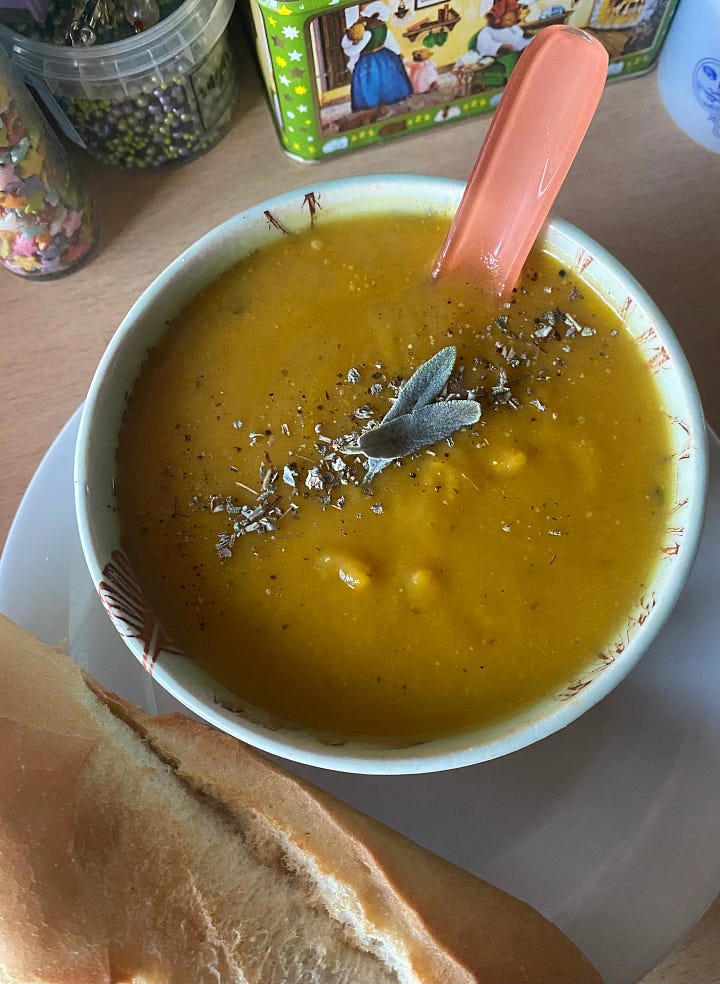
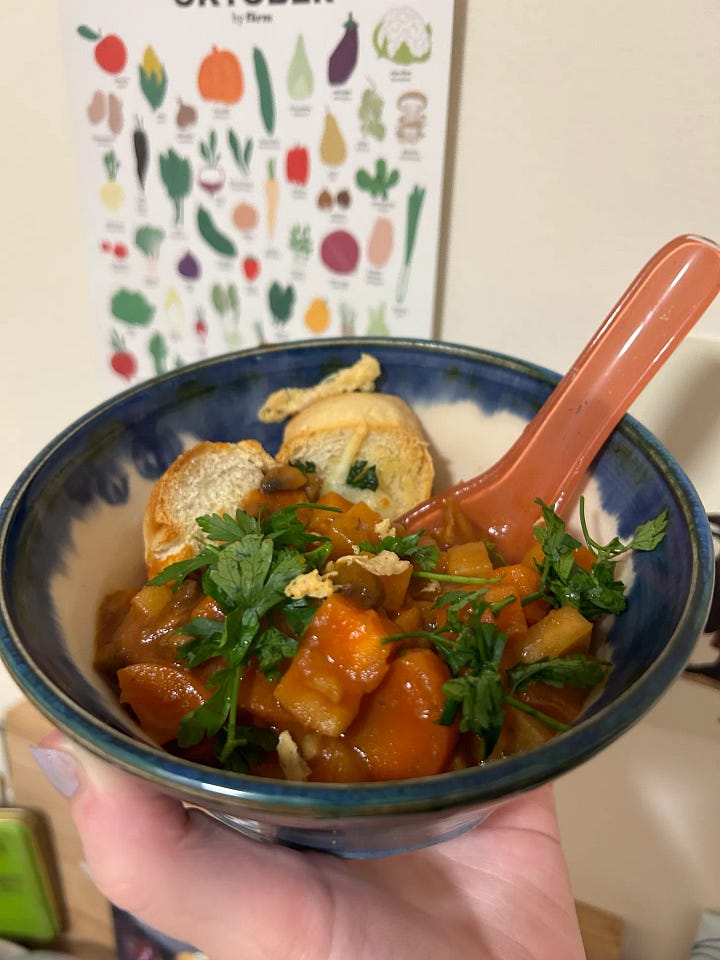
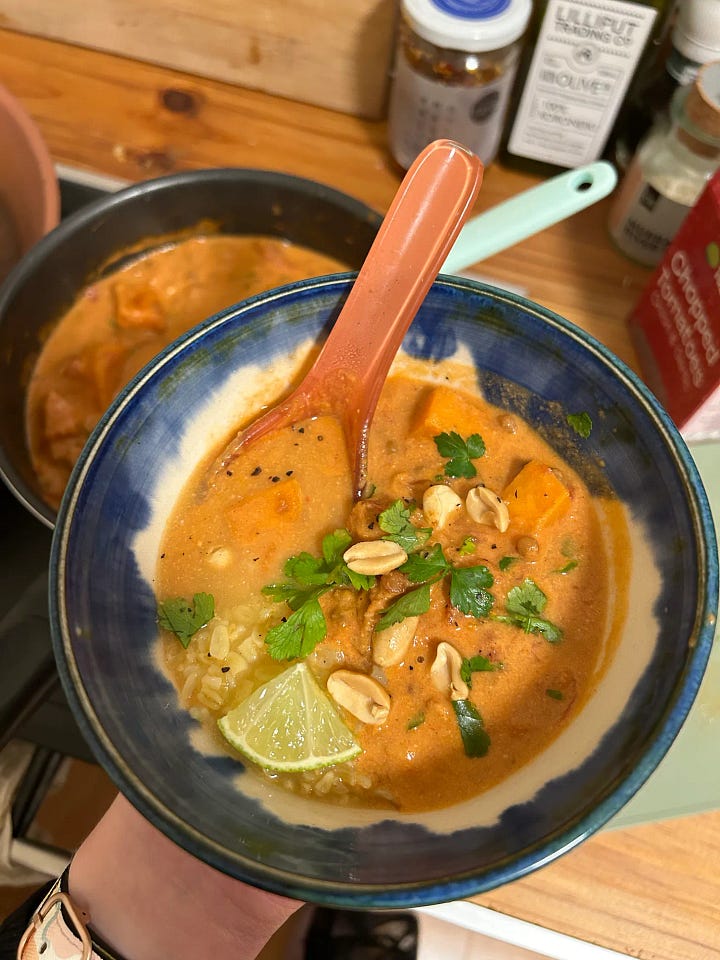
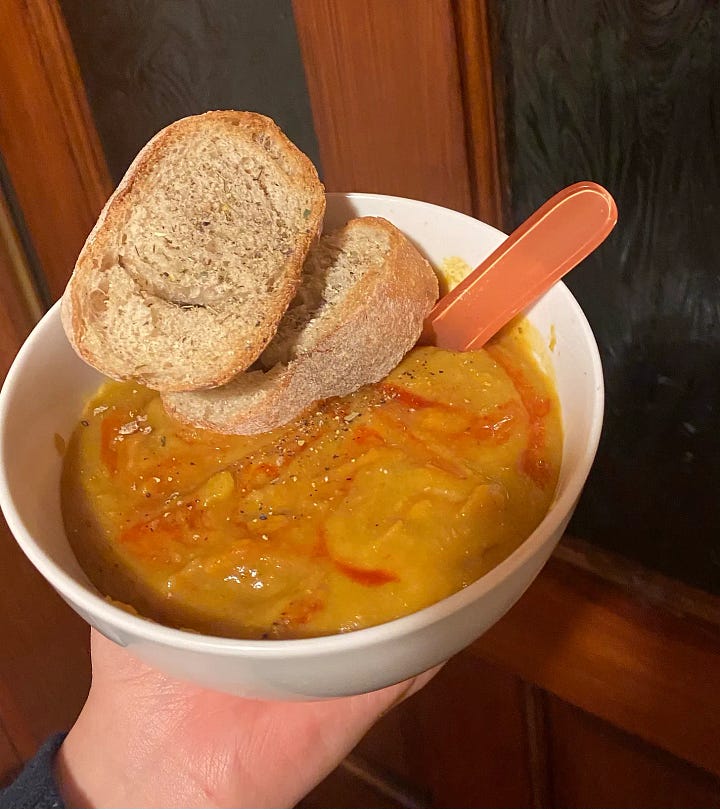
For the past few months, every gathering I have attended at a friend’s house has included a pot of soup for everyone to share. We dip thick slices of sourdough into butternut squash soup while we watch cartoons in october. We cradle bowls of creamy carrot and ginger as we sit around a fire under a chilly, star filled november sky. There’s always enough for everyone.
I think also of the idea of the perpetual stew3 - the forever soup which is made and remade of the same broth for months or decades. These stews can be found in numerous culinary cultures, and seem to date back to centuries old traditions of making nourishing, communal cauldrons and stockpots of food.
The notion of perpetual stew had a moment on social media this past summer when the “Perpetual Stew Club” cooked and served soup in Bushwick for two months, continuing the project thanks to ingredients contributed by participants. This project was both an impressive feat of the timeless power of soup as well as an embodiment of the restorative and shared potential of the food to feed communities. It felt like a contemporary enactment of the ‘stone soup’ fable - everyone brings something to the pot, be it something big or something small, everyone shares in an experience, everyone gets to eat.
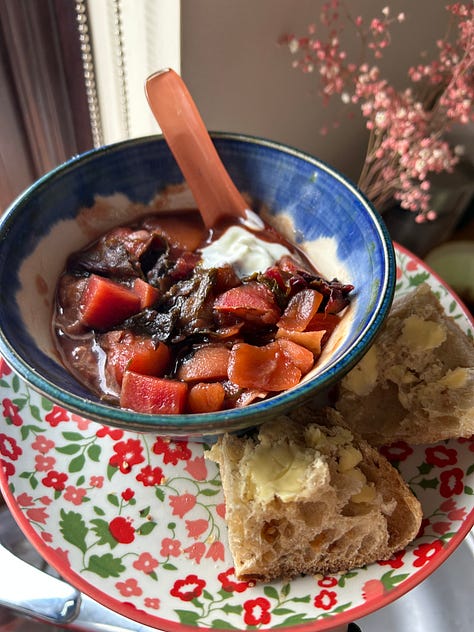
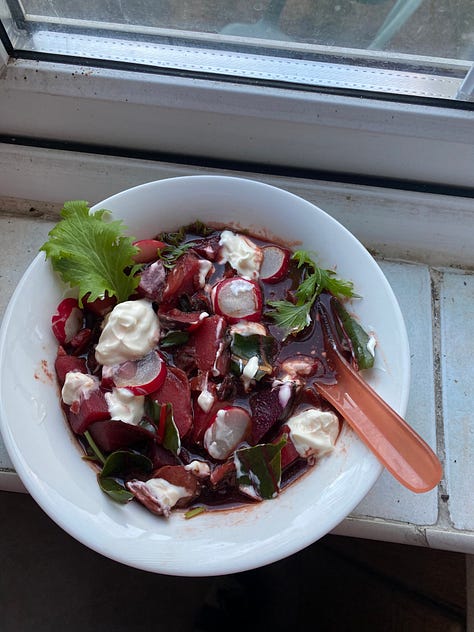
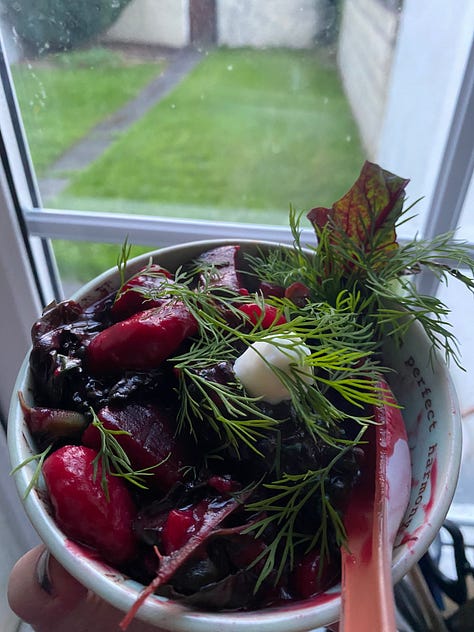
In the almost folkloric pots of perpetual stews and master stocks, we see the ways in which soup is an enduring symbol of sustenance, good health, comfort, and communality.
But I also think that soup has become such an enduring object of obsession on social media in connection with the past years’ increased interest in and longing for comfort seen in nostalgic and ‘cozy season’ centred content, and in the increasingly granular obsession with ‘aesthetics’ and ‘cores’ that has shaped how we talk about our interests and associations in communities online.
It’s not enough to eat soup - one must be a soup girlie, take part in soup tok, be part of the in-group. Soupposting often overlaps greatly with ‘core’ communities online, and is seen in posts seeking to create a unified aesthetic around ideas like ‘cottagecore’.4 We cannot merely be cozy - instead, coziness is an aesthetic with a specified set of images, clothing styles, cartoon characters, and other memeified miscellania that online communities cultivate into the ingredients for stewing together.
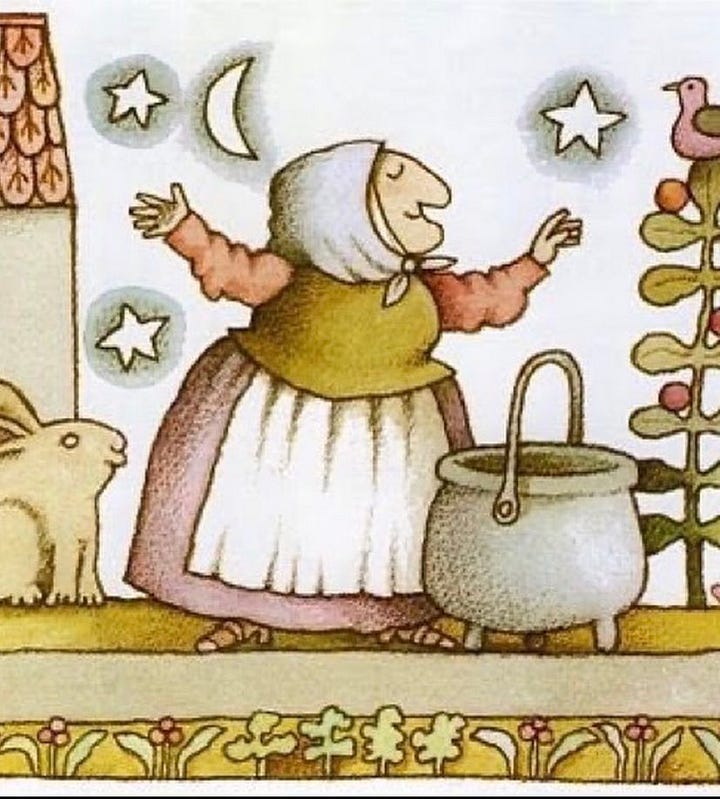
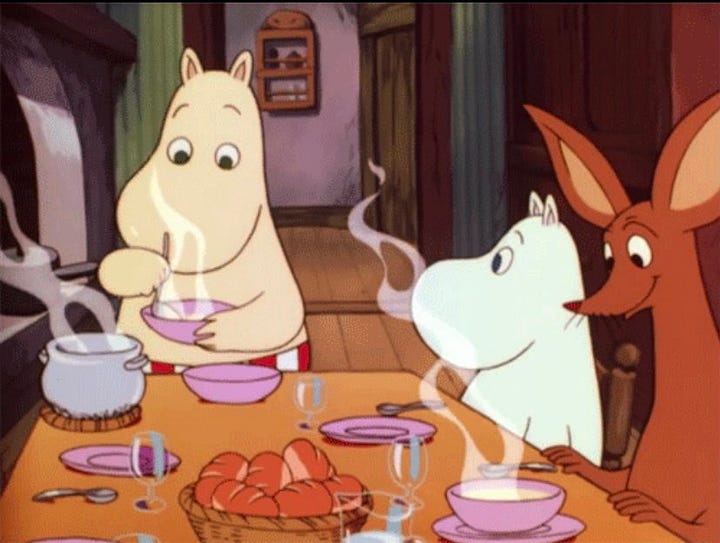
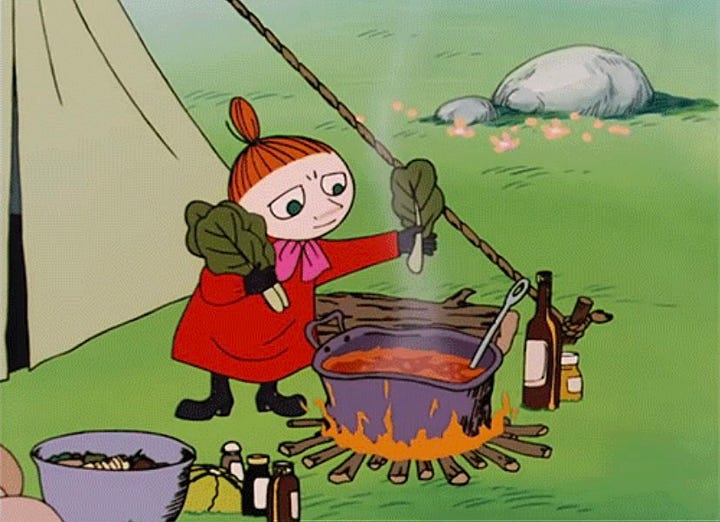
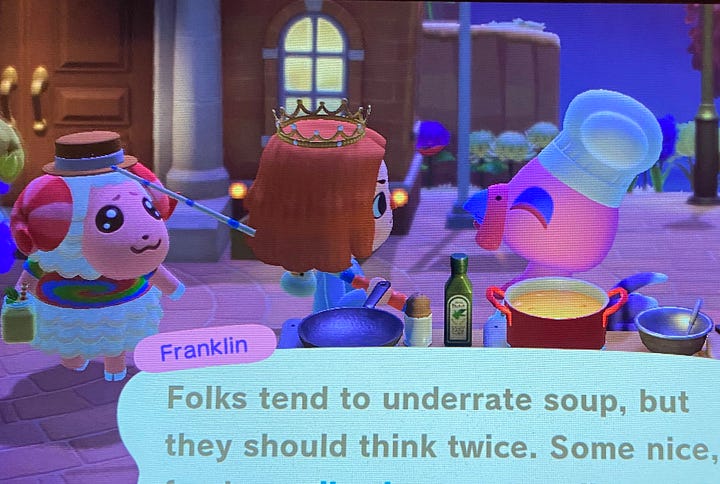
In the soupworld of soupposting, we enter soup season, shift into soup mode, become soupcore, brothcoded, potagepilled. Soup posting suggests a digital analog to the restorative nourishment of eating the food itself; instead of material comforts, sharing soup memes offers solace online through nostalgic, comfort seeking trends as a means by which the harshness and exhaustion of the real world might be combated(or, perhaps, ignored?)
As we continue to obsess over aesthetics and internet community identities, even(or perhaps, especially,) the most sensory and materially rooted comforts of life become unrooted and disconnected from their worldly value to become just another quirky social media token.
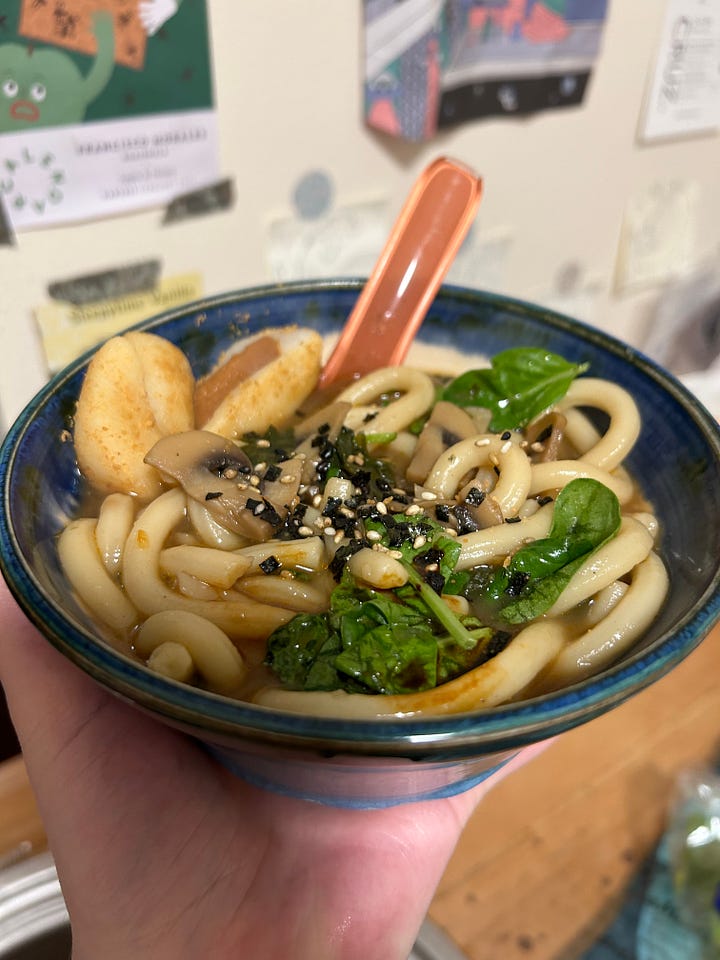
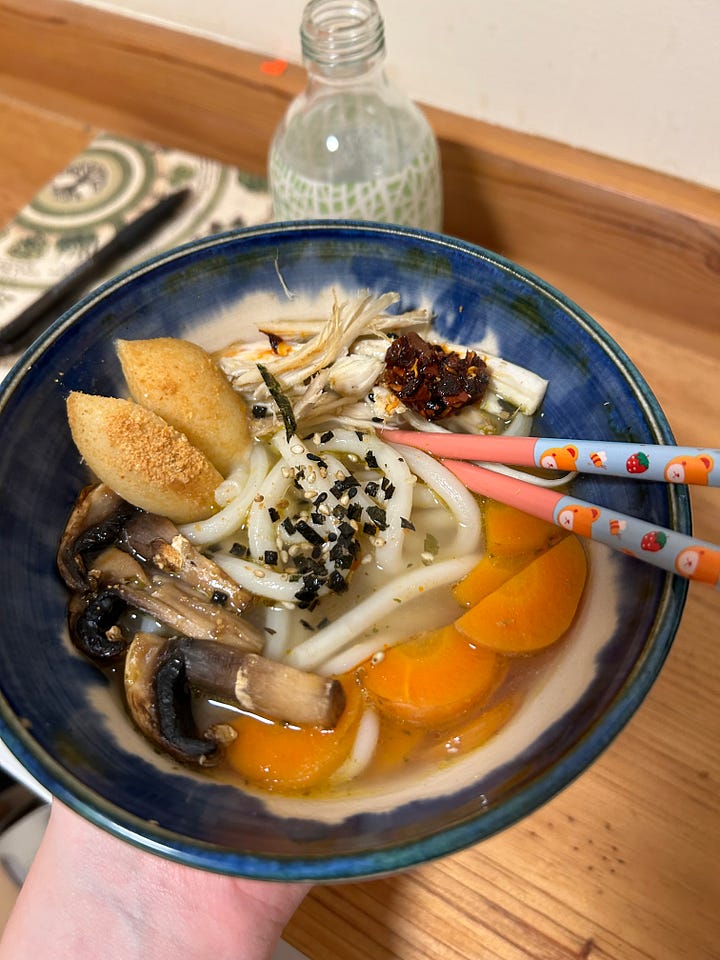
Or, perhaps, at the end of the day, our soup memes are the modern ‘restaurant’ - a new means by which the warmth and comfort of something shared and timeless can help us get through the long, cold winter months.
Recently consumed:
Currently reading: Brutes by Dizz Tate - I’m still reading and deciding how I feel about this book - it’s a dreamlike, and unnerving tale of a group of middle school girls living in Florida(implied I think to be suburban Orlando?), and takes place primarily around the time of the disappearance of a girl they went to school with, the daughter of a famous evangelical preacher. I’ve heard it compared to books like The Virgin Suicides by Jeffrey Eugenides and Bunny by Mona Awad, and I think it really echoes the strange, choral voice of those narratives.
Poem: I am offering this poem by Jimmy Santiago Baca, which speaks to some of the most comforting, loving feelings we might find in soup and soup internet.
Eating: I’ve been making a lot of Jar Soups for office lunches - I fill a jar with ingredients which can be turned into a quick soup with hot water from the kettle(you could also do this in the microwave, if you do not have an office kettle.) - instant or fast cooking noodles along the lines of ramen, udon, rice noodles, wai wai, etc., a soup base that might include stock or stock powder, soy sauce, sesame oil, miso, chili oil, peanut butter, dried vegetables(especially shitake mushrooms!), and other seasonings., plus I like to add things like tofu cubes or vegetables, usually just whatever I have in the fridge, and top it off with vegetables that can be easily steamed by the added hot water, such as spinach or bok choi. The jar is easy to transport and to make ahead, and then all I have to do is add hot water and let it sit, covered, for a few minutes before mixing everything together into a nice soup!
Recommending: I was finally able to get my Winter 2023 COVID booster this week, a quick and painless5 process which took about ten minutes out of my day. Have you gotten a fall/winter 2023 booster yet?
In Ireland, you can get an up to date booster for free - check the HSE guidance for more information and to find pharmacies near you offering appointments, or speak to a GP. In the United States, Vaccines.gov has a useful search function for finding boosters, and even offers specific searches by vaccine type, including Novavax.
I would highly encourage you to get one if you have not within the last 3-4 months - protect your community, your immunocomprised and chronically ill friends, and yourself!!
See you next week,
isobel
It has also been a hot topic across the world for time immemorial.
The linked article by Ali Francis, “On Soup Internet, Everything is Cozy and Nothing Hurts,” gives a more in depth look at the specific memes and trends associated with the internet’s soup craze, and helped guide some of my thinking about the trend I am calling soupposting here.
https://en.m.wikipedia.org/wiki/Perpetual_stew
In the interest of honesty: I definitely felt achey and tired the next day. But trust me, this is a fate much preferable to either a short or long COVID infection.











